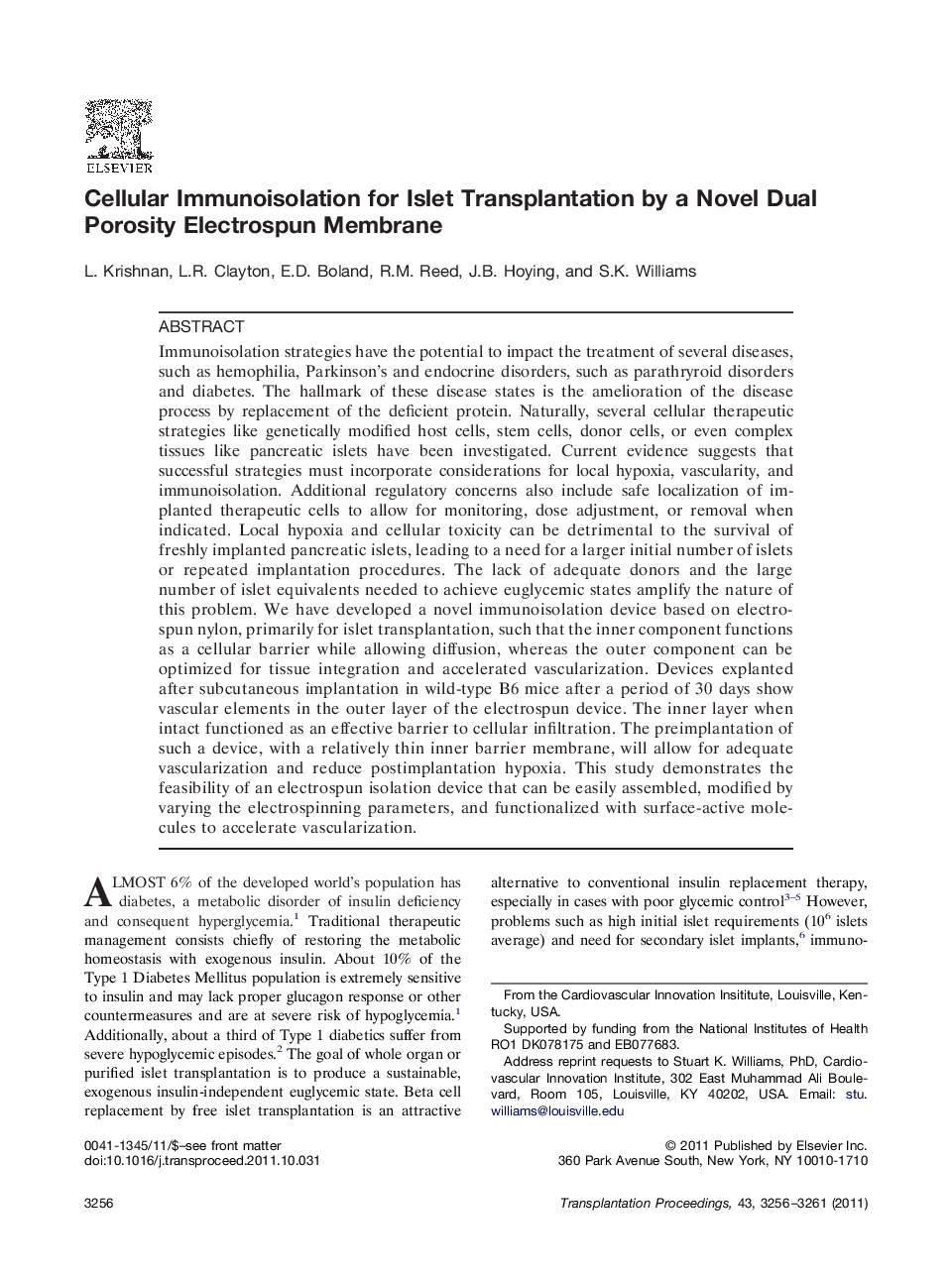| Article ID | Journal | Published Year | Pages | File Type |
|---|---|---|---|---|
| 4258570 | Transplantation Proceedings | 2011 | 6 Pages |
Immunoisolation strategies have the potential to impact the treatment of several diseases, such as hemophilia, Parkinson's and endocrine disorders, such as parathryroid disorders and diabetes. The hallmark of these disease states is the amelioration of the disease process by replacement of the deficient protein. Naturally, several cellular therapeutic strategies like genetically modified host cells, stem cells, donor cells, or even complex tissues like pancreatic islets have been investigated. Current evidence suggests that successful strategies must incorporate considerations for local hypoxia, vascularity, and immunoisolation. Additional regulatory concerns also include safe localization of implanted therapeutic cells to allow for monitoring, dose adjustment, or removal when indicated. Local hypoxia and cellular toxicity can be detrimental to the survival of freshly implanted pancreatic islets, leading to a need for a larger initial number of islets or repeated implantation procedures. The lack of adequate donors and the large number of islet equivalents needed to achieve euglycemic states amplify the nature of this problem. We have developed a novel immunoisolation device based on electrospun nylon, primarily for islet transplantation, such that the inner component functions as a cellular barrier while allowing diffusion, whereas the outer component can be optimized for tissue integration and accelerated vascularization. Devices explanted after subcutaneous implantation in wild-type B6 mice after a period of 30 days show vascular elements in the outer layer of the electrospun device. The inner layer when intact functioned as an effective barrier to cellular infiltration. The preimplantation of such a device, with a relatively thin inner barrier membrane, will allow for adequate vascularization and reduce postimplantation hypoxia. This study demonstrates the feasibility of an electrospun isolation device that can be easily assembled, modified by varying the electrospinning parameters, and functionalized with surface-active molecules to accelerate vascularization.
